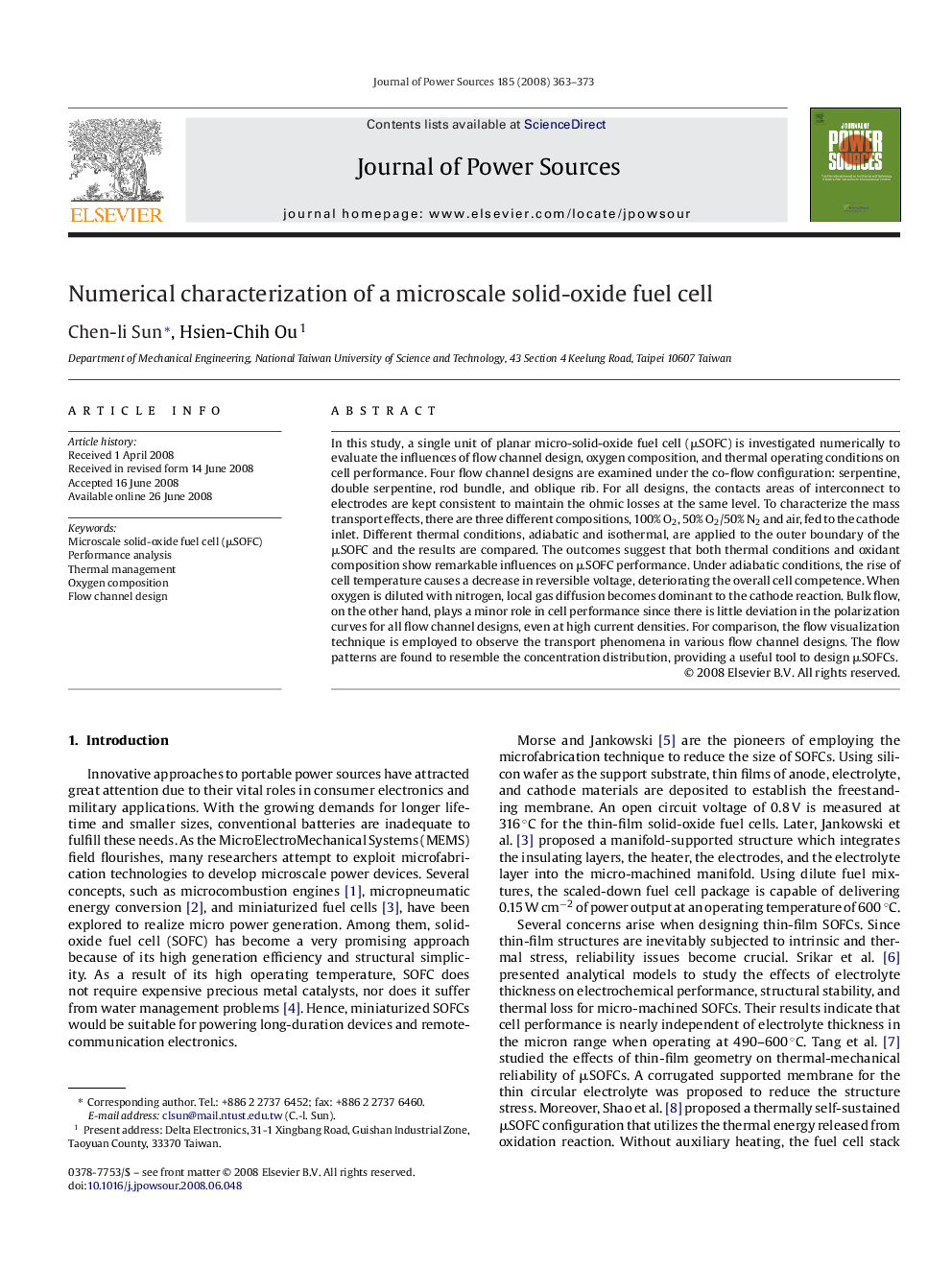| کد مقاله | کد نشریه | سال انتشار | مقاله انگلیسی | نسخه تمام متن |
|---|---|---|---|---|
| 1294422 | 973615 | 2008 | 11 صفحه PDF | دانلود رایگان |

In this study, a single unit of planar micro-solid-oxide fuel cell (μSOFC) is investigated numerically to evaluate the influences of flow channel design, oxygen composition, and thermal operating conditions on cell performance. Four flow channel designs are examined under the co-flow configuration: serpentine, double serpentine, rod bundle, and oblique rib. For all designs, the contacts areas of interconnect to electrodes are kept consistent to maintain the ohmic losses at the same level. To characterize the mass transport effects, there are three different compositions, 100% O2, 50% O2/50% N2 and air, fed to the cathode inlet. Different thermal conditions, adiabatic and isothermal, are applied to the outer boundary of the μSOFC and the results are compared. The outcomes suggest that both thermal conditions and oxidant composition show remarkable influences on μSOFC performance. Under adiabatic conditions, the rise of cell temperature causes a decrease in reversible voltage, deteriorating the overall cell competence. When oxygen is diluted with nitrogen, local gas diffusion becomes dominant to the cathode reaction. Bulk flow, on the other hand, plays a minor role in cell performance since there is little deviation in the polarization curves for all flow channel designs, even at high current densities. For comparison, the flow visualization technique is employed to observe the transport phenomena in various flow channel designs. The flow patterns are found to resemble the concentration distribution, providing a useful tool to design μSOFCs.
Journal: Journal of Power Sources - Volume 185, Issue 1, 15 October 2008, Pages 363–373